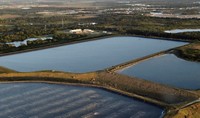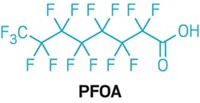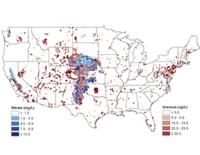Advertisement
Grab your lab coat. Let's get started
Welcome!
Welcome!
Create an account below to get 6 C&EN articles per month, receive newsletters and more - all free.
It seems this is your first time logging in online. Please enter the following information to continue.
As an ACS member you automatically get access to this site. All we need is few more details to create your reading experience.
Not you? Sign in with a different account.
Not you? Sign in with a different account.
ERROR 1
ERROR 1
ERROR 2
ERROR 2
ERROR 2
ERROR 2
ERROR 2
Password and Confirm password must match.
If you have an ACS member number, please enter it here so we can link this account to your membership. (optional)
ERROR 2
ACS values your privacy. By submitting your information, you are gaining access to C&EN and subscribing to our weekly newsletter. We use the information you provide to make your reading experience better, and we will never sell your data to third party members.
Environment
Bromate in Los Angeles Water
Suspected carcinogen may lead to new monitoring regulations nationwide
by Jyllian Kemsley
December 24, 2007
| A version of this story appeared in
Volume 85, Issue 52

THE CITY OF LOS ANGELES must drain 600 million gal of water—about a day's supply—from two reservoirs after discovering high levels of bromate, a suspected carcinogen. The bromate appears to have formed in sunlit water when chlorine oxidized bromide from groundwater. The unexpected chemistry is leading to changes in water-monitoring requirements at the local and state levels and may affect nationwide policies.
Bromide often occurs naturally in water supplies and is commonly oxidized to bromate during ozone disinfection of drinking water. Water treatment plants that use ozone are therefore required to test for bromate before releasing water to distribution systems. In the LA reservoirs, however, bromate was produced spontaneously in posttreatment water stored in surface reservoirs.
Neither state nor federal regulations require testing for bromate in water supplies posttreatment. The LA Department of Water & Power (LADWP) learned of the problem from a laboratory conducting tests for a commercial customer. Generally, water suppliers must keep bromate levels to a maximum of 10 ppb on average over a year. But in October, the city's Silver Lake reservoir had a bromate level of 68 ppb, while its Elysian reservoir had 106 ppb.
LADWP is still studying what happened in the reservoirs, says Pankaj Parekh, LADWP's director for water quality compliance, although experiments have confirmed that the critical components are bromide, chlorine, sunlight, and probably dissolved oxygen. Parekh notes that most of the literature on bromate formation focuses on managing it in treatment plants or as part of desalination of ocean water. "There is very sparse information available for the type of drinking-water scenario facing us," he says, adding that the department is rapidly developing an appreciation for photochemistry.
Parekh tells C&EN that LADWP is unusual but not unique in storing drinking water in open reservoirs. Such reservoirs are more typically used to store raw water before disinfection. LADWP, however, serves a very large area, and the reservoirs play a critical role in maintaining pressure in the system as demand fluctuates during the day.
LADWP now routinely tests for bromate in surface reservoirs of treated water. Rufus B. Howell, chief of the California Department of Public Health (CDPH) Division of Drinking Water & Environmental Management, wrote in a Nov. 30 letter to LADWP that CDPH believes bromate monitoring "should be expanded to cover certain additional facilities not utilizing ozone disinfectant." CDPH has identified two other reservoirs with elevated bromate levels, both in San Diego County.
U.S. EPA spokeswoman Enesta Jones says, "EPA is working to understand the specific conditions that resulted in elevated levels of bromate in the two reservoirs in the Los Angeles area." If EPA determines that the conditions could be replicated elsewhere, EPA will work with state agencies and water utilities "to ensure that others avoid a similar situation," she adds.





Join the conversation
Contact the reporter
Submit a Letter to the Editor for publication
Engage with us on Twitter